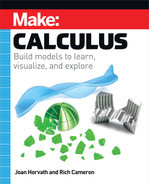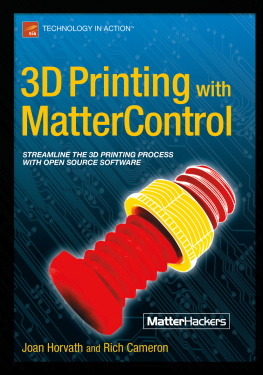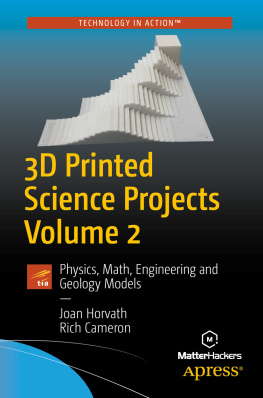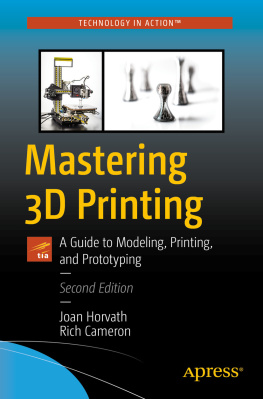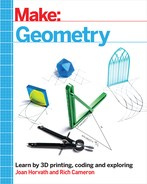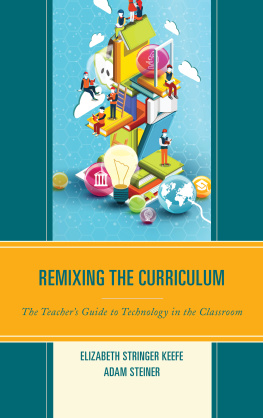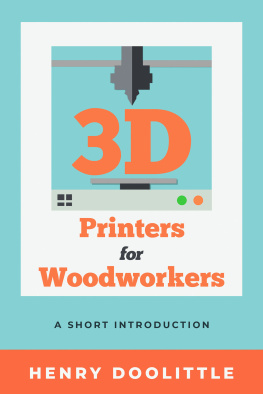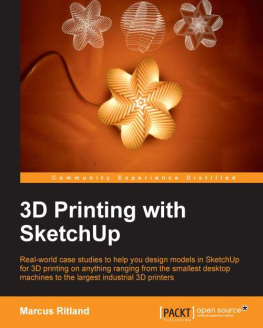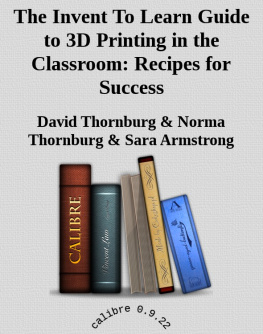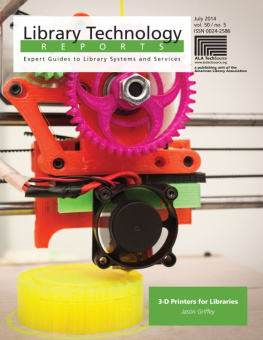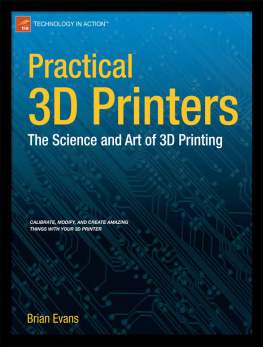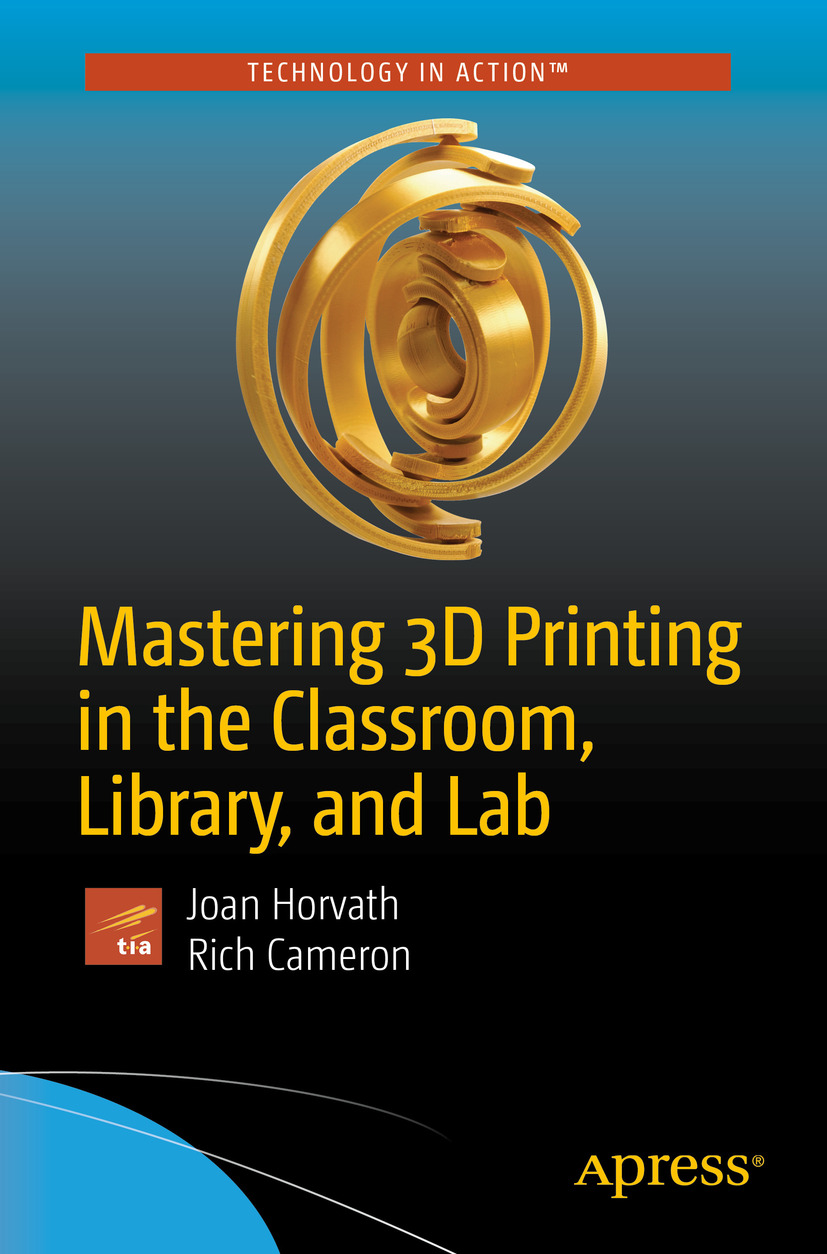Joan Horvath
Nonscriptum LLC, Pasadena, CA, USA
Rich Cameron
Nonscriptum LLC, Pasadena, CA, USA
ISBN 978-1-4842-3500-3 e-ISBN 978-1-4842-3501-0
https://doi.org/10.1007/978-1-4842-3501-0
Library of Congress Control Number: 2018960932
Joan Horvath, Rich Cameron 2018
This work is subject to copyright. All rights are reserved by the Publisher, whether the whole or part of the material is concerned, specifically the rights of translation, reprinting, reuse of illustrations, recitation, broadcasting, reproduction on microfilms or in any other physical way, and transmission or information storage and retrieval, electronic adaptation, computer software, or by similar or dissimilar methodology now known or hereafter developed.
Trademarked names, logos, and images may appear in this book. Rather than use a trademark symbol with every occurrence of a trademarked name, logo, or image we use the names, logos, and images only in an editorial fashion and to the benefit of the trademark owner, with no intention of infringement of the trademark. The use in this publication of trade names, trademarks, service marks, and similar terms, even if they are not identified as such, is not to be taken as an expression of opinion as to whether or not they are subject to proprietary rights.
While the advice and information in this book are believed to be true and accurate at the date of publication, neither the authors nor the editors nor the publisher can accept any legal responsibility for any errors or omissions that may be made. The publisher makes no warranty, express or implied, with respect to the material contained herein.
Distributed to the book trade worldwide by Springer Science+Business Media New York, 233 Spring Street, 6th Floor, New York, NY 10013. Phone 1-800-SPRINGER, fax (201) 348-4505, e-mail orders-ny@springer-sbm.com, or visit www.springeronline.com. Apress Media, LLC is a California LLC and the sole member (owner) is Springer Science + Business Media Finance Inc (SSBM Finance Inc). SSBM Finance Inc is a Delaware corporation.
Introduction
It has only been four years since the original 2014 Mastering 3D Printing went to press. In the intervening years, the field has exploded so much that we are to focusing this book on the needs of the educational and scientific markets. Printers have dropped in price down to a few hundred dollars for a basic model and a few thousand for a fairly sophisticated one. Yet adoption has been remarkably slow in education, and we hope to change that.
This book focuses on consumer-level printers and their applications in the educational and scientific environments. We focus primarily on 3D printers that create objects by melting plastic filament, but also include a little about printers that use liquid resin.
3D printing can be defined pretty simply: creating an object by building it up layer by layer, rather than machining it away the way you would by making something from a block of wood, or by squirting something into a mold as you would for injection-molded plastic parts. Its flexibility and the sheer magic of seeing something built from nothing have captured peoples imaginations, and it is clear that surprising applications will continue to pop up for years to come.
This book is intended for several audiences. It is meant to be a self-contained tutorial on consumer 3D printers and the open source software that runs them, particularly for educators who are trying to set up or run a school makerspace or librarians who are trying to figure out what to do about a mandate to buy printers or create a community space.
Although we say the book is for classroom, library, and lab, a broader audience will find the core information helpful. If you are not an educator and want to focus on the 3D printing per se, Chapters discusses making prints as strong as possible. The examples in the other chapters, although primarily classroom oriented, may inspire you for your projects as well.
This book also is intended to be used as a text for a semester-length class or university extension course series covering 3D printing, its applications, and its place in education. It might be paired with an in-depth class on 3D computer-aided design (CAD) software for students interested in teaching engineering and industrial or product design. Similarly, it might be paired with instruction in one of the sculptural 3D-modeling programs for students developing skills in 3D animation or fine art.
Part I (Chapters ) of the book gives background on the history of 3D printers, talks about how the hardware and software work, discusses available materials, and gives some detail of the 3D-printing workflow.
Part II (Chapters ) reviews how to decide what kind of printer you need to buy, based on what you want to build with it and what materials you think you will want to be able to use. This part also reviews what kinds of facilities different 3D printers require, and the hands-on details of dealing with issues that might arise during a print. Finally, this part reviews options you can use to create 3D-printable model files.
Part III (Chapters ) discusses the classroom use of 3D printing in different subject disciplines, with a particular focus on K12. We start off with a brief introduction to common issues in classroom 3D printing, and then look at art and theater concerns, considering print post-processing topics like gluing, sanding, and painting, as well as a bit about casting jewlery. We also consider engineering concerns, like making a print strong enough for a functional job. Next, we take up using printers in language arts and social studies, and in the elementary school environment. Finally, we talk about how 3D prints might help special-needs students, particularly the visually impaired.
Finally, in Part IV (Chapters winds up the book with a discussion of the opportunities and challenges for teaching entrepreneurship, and tries to predict where the manufacturing and other applications of the technology are likely to be in the near and longer term.
We also include an appendix, in which we have gathered all the links from the book, plus a few news sources that cover the 3D printing world and some books that might provide other places to explore.
Librarians will likely find Chapters may suggest community projects.
The field is still evolving. As in the 2014 Mastering 3D Printing, we have avoided detailed descriptions of software packages. We stick with descriptions that will let you get started but will not be wrong three months after publication. We like to say that 3D printing is about as complex as cooking. In cooking terms, you will find that this book has a bias away from providing recipes to follow exactly and instead leans toward teaching you how to cook using your own judgement for the long haul.
If you are just starting your exploration of the field, welcome. Hopefully this book will be a good guide for you, and you will finish it ready to take on challenges and try to help build this new frontier along with us.


